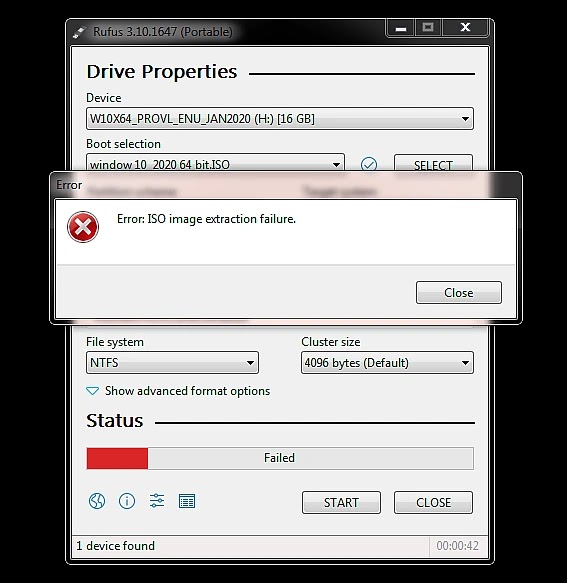Resolving ISO Image Extraction Failure
Encountering an error during ISO image extraction can disrupt the process of creating bootable USB drives, hindering system initialization and potentially impeding productivity. In this guide, we explore solutions to resolve this issue and facilitate seamless ISO image extraction.
Introduction to Rufus
Rufus is a compact utility designed to convert standard flash drives into bootable USB devices, enabling direct booting into DOS environments. Configuring Rufus is straightforward: simply insert the target device, adjust the desired options, and initiate the process with a single click. Within moments, a fully functional bootable USB drive for DOS is prepared, offering unparalleled ease of use and efficiency.
Solving ISO Image Extraction Failure
To address ISO image extraction failure, follow these steps:
- Format USB Flash Drive with NTFS File System: Format the USB flash drive using the NTFS file system format. This action can often resolve compatibility issues and facilitate successful ISO image extraction.
Understanding Windows Imaging Format (WIM)
The Windows Imaging Format (WIM) is a file-based disk image format developed by Microsoft to streamline the deployment of Windows operating systems. Unlike sector-based formats such as ISO or VHD, WIM utilizes a file-based structure, storing a collection of files and associated metadata. Key features of WIM include:
- Hardware Independence: WIM’s file-based structure ensures compatibility across diverse hardware environments.
- Single-Instance Storage: WIM employs single-instance storage, reducing redundancy by storing identical files only once within the image.
- Multi-Image Support: WIM files can contain multiple disk images, offering flexibility in deployment scenarios.
- Compression Algorithms: WIM supports LZ77-based compression algorithms, catering to varying compression ratio and speed requirements.
Additionally, WIM images can be made bootable (WIMBoot), allowing direct booting into Windows from within a WIM file. This functionality is leveraged in Windows Setup DVDs, where BOOT.WIM contains a bootable version of Windows PE for installation purposes.
Tools for Disk Imaging
- ImageX: ImageX is a command-line tool used to create, edit, and deploy Windows disk images in the WIM format. Distributed as part of the Windows Automated Installation Kit (WAIK/OPK), ImageX facilitates efficient disk imaging operations.
- DISM (Deployment Image Service and Management Tool): DISM, introduced in Windows 7 and Windows Server 2008 R2, performs servicing tasks on Windows installation images. Its features include image mounting, device driver management, and repair capabilities.
Support in Other Operating Systems
- WIMLib: An open-source library for handling WIM format, enabling its use on Unix-like systems.
- Conversion to ISO: WIM images can be converted to ISO format using tools such as the Windows Assessment and Deployment Kit.
By leveraging these tools and understanding the intricacies of disk imaging formats, users can effectively manage and deploy Windows operating systems across diverse hardware environments.
